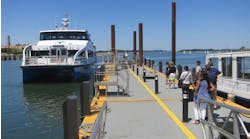Bike-share has taken many forms over the course of its development, from free bikes left for a community to use at will to more technologically advanced and secure systems. In every iteration, the essence of bike-share remains simple: anyone can pick up a bike in one place and return it to another, making point-to-point, human powered transportation feasible.
Today, more than 400 cities around the globe have their own bike-share systems, and more programs are starting every year. The largest systems are in China, in cities such as Hangzhou and Shanghai. In Paris, London, and Washington, D.C., highly successful systems have helped to promote cycling as a viable and valued transport option.
Each city has made bike-share its own, adapting it to the local context, including the city’s density, topography, weather, infrastructure, and culture. Although other cities’ examples can serve as useful guides, there is no single model of bike-share.



